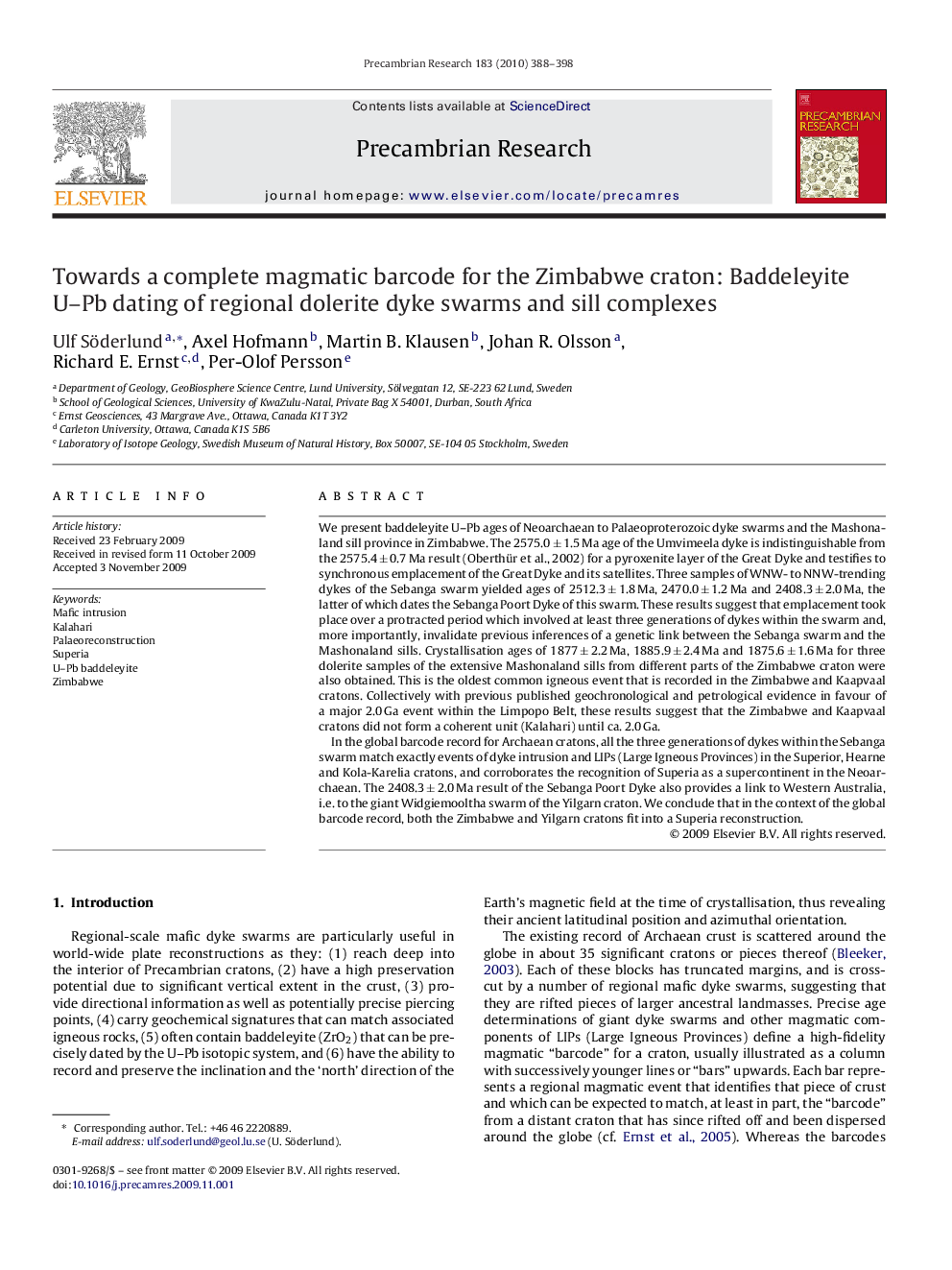| کد مقاله | کد نشریه | سال انتشار | مقاله انگلیسی | نسخه تمام متن |
|---|---|---|---|---|
| 4723715 | 1355543 | 2010 | 11 صفحه PDF | دانلود رایگان |

We present baddeleyite U–Pb ages of Neoarchaean to Palaeoproterozoic dyke swarms and the Mashonaland sill province in Zimbabwe. The 2575.0 ± 1.5 Ma age of the Umvimeela dyke is indistinguishable from the 2575.4 ± 0.7 Ma result (Oberthür et al., 2002) for a pyroxenite layer of the Great Dyke and testifies to synchronous emplacement of the Great Dyke and its satellites. Three samples of WNW- to NNW-trending dykes of the Sebanga swarm yielded ages of 2512.3 ± 1.8 Ma, 2470.0 ± 1.2 Ma and 2408.3 ± 2.0 Ma, the latter of which dates the Sebanga Poort Dyke of this swarm. These results suggest that emplacement took place over a protracted period which involved at least three generations of dykes within the swarm and, more importantly, invalidate previous inferences of a genetic link between the Sebanga swarm and the Mashonaland sills. Crystallisation ages of 1877 ± 2.2 Ma, 1885.9 ± 2.4 Ma and 1875.6 ± 1.6 Ma for three dolerite samples of the extensive Mashonaland sills from different parts of the Zimbabwe craton were also obtained. This is the oldest common igneous event that is recorded in the Zimbabwe and Kaapvaal cratons. Collectively with previous published geochronological and petrological evidence in favour of a major 2.0 Ga event within the Limpopo Belt, these results suggest that the Zimbabwe and Kaapvaal cratons did not form a coherent unit (Kalahari) until ca. 2.0 Ga.In the global barcode record for Archaean cratons, all the three generations of dykes within the Sebanga swarm match exactly events of dyke intrusion and LIPs (Large Igneous Provinces) in the Superior, Hearne and Kola-Karelia cratons, and corroborates the recognition of Superia as a supercontinent in the Neoarchaean. The 2408.3 ± 2.0 Ma result of the Sebanga Poort Dyke also provides a link to Western Australia, i.e. to the giant Widgiemooltha swarm of the Yilgarn craton. We conclude that in the context of the global barcode record, both the Zimbabwe and Yilgarn cratons fit into a Superia reconstruction.
Journal: Precambrian Research - Volume 183, Issue 3, 1 December 2010, Pages 388–398